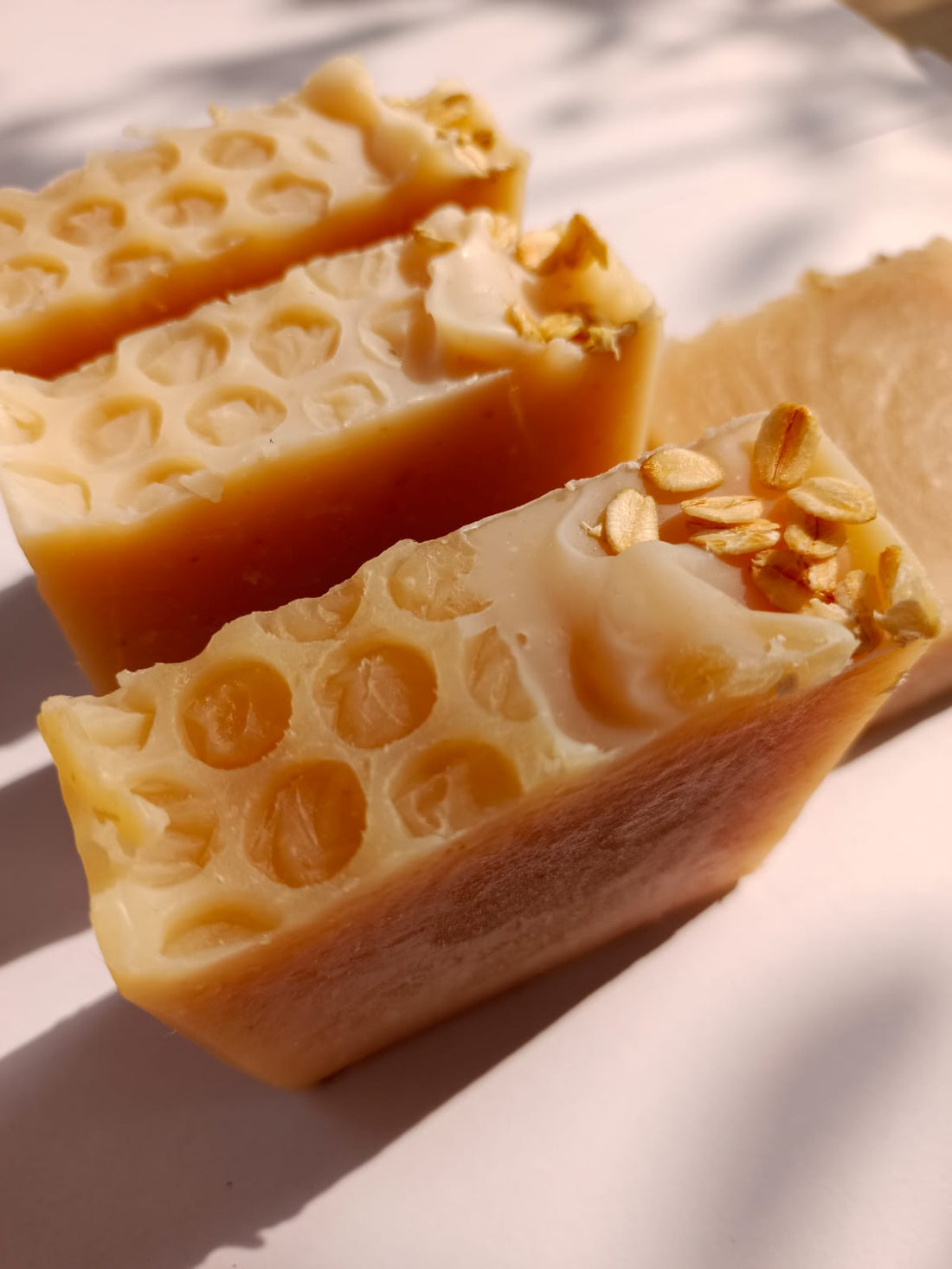Why Are Artisanal Soaps Expensive?
"Quality is never an accident. It is always the result of intelligent effort." – John Ruskin
I can’t count the number of times I’ve heard this question:
“Why are these soaps so expensive?”
At exhibitions.
At pop-ups.
Even at family dinners.
Every time someone picks up one of our handmade soaps, admires the scent, the design, the texture—and then pauses at the price tag—I know what’s coming. And honestly? I get it. On the surface, ₹250 or ₹300 for a bar of soap might feel steep when you’re used to grabbing one off a supermarket shelf for ₹40. But here’s the thing: they’re not the same product.
Let’s break this down—plain and simple.
1. It’s All Handmade
Artisanal soaps are made by people, not machines. Every bar is hand-poured, hand-cut, and hand-wrapped. That means real time, real effort, and real hands behind every piece.
There’s no big factory churning out thousands of identical bars in a day. It’s me (and my small team) working through batches, checking every detail.
And labor isn’t free. Skilled hands and time-intensive work naturally cost more than an automated production line. It’s the difference between a tailor-made outfit and a mass-produced T-shirt.
2. The Ingredients Tell the Real Story
We use premium oils and butters—olive oil, shea butter, cocoa butter, cold-pressed coconut oil, even avocado and jojoba oils in some blends. These are ingredients your skin loves. They’re moisturizing, nourishing, and safe.
We also add pure ingredients like honey, oatmeal, clays like Multani Mitti (fuller’s earth), and organic herbal powders. These are real, raw, and powerful ingredients—and they’re expensive.
Not only do they cost more, but they’re also not always easy to source consistently in India, especially if you're trying to stay organic or local. That avocado oil in your soap? Not mass-produced. That raw shea butter? Imported, and not the cheap, refined kind.
3. It’s Real Soap. Not Detergent in Disguise.
Here’s a big one most people miss:
Most supermarket soaps aren’t actually soap.
Sounds crazy, right? But read the label. Many are "syndet bars"—synthetic detergent bars (also labelled as cleansing bars, body bars or beauty bars). They’re cheaper to make, lather like crazy, and have a long shelf life. But they strip your skin, leaving it dry and irritated.
Real soap, on the other hand, is made through a natural process called saponification. It retains glycerin, which is a natural skin conditioner. That alone makes a massive difference to your skin health.
4. Let Me Tell You a Little Story
At one of our first exhibitions, a man walked up to our stall and picked up a soap. He sniffed it, looked at the packaging, nodded along... and then saw the price.
“₹250 for a soap?” he asked, eyes wide. “I get mine for ₹25! What’s so special about yours?”
I smiled, took a breath, and explained. The ingredients. The process. The difference between real soap and detergent bars. He listened politely, then shrugged and said,
“Still feels overpriced. Soap is soap.”
At that moment his words stung but I realized something important:
You can’t convince everyone.
Some people truly value handmade, clean, and ethical products. Others just want something that foams up and smells like lemons. And that’s okay. But for the ones who do care—who understand the value of good ingredients and artisanal work—our soaps are not just soaps. They’re self-care.
5. So… Is It Worth the Price?
That’s really up to you. If you're looking for a bar that just gets you clean, you have plenty of cheaper options. But if you want a soap that feeds your skin, smells divine, supports small businesses, avoids harsh chemicals, and is made with genuine care—then artisanal soaps are absolutely worth the price.
And honestly, once you use a real, cold-processed bar of soap, it's hard to go back to the commercial stuff.
Quick Tips If You're New to Artisanal Soaps:
- Check the ingredient list. If you can pronounce everything and recognize the oils, you’re on the right track.
- Store your soap in a dry, ventilated dish. It’ll last longer.
- Try unscented or oatmeal-based bars if you have sensitive skin.
- Support local makers. The money you spend goes to real people, not massive corporations.
So next time you hold an artisanal soap and wonder why it costs more, remember—you’re not just buying a product.
You’re choosing quality, integrity, and intention.
And sometimes, that makes all the difference.
If you’ve ever tried a handmade soap, I’d love to hear your thoughts—did it feel different? Drop your story in the comments below!
Also check out our artisanal soap collection at https://mandyandco.in/collections/artisanal-soaps
You can also check out our Blog Post on choosing the right kind of soap for your skin type on https://mandyandco.in/blogs/guide-to-natural-ingredients/which-soap-is-best-for-skin-a-guide-to-choosing-the-right-soap

